Unique Finds At Mission Archaeological Dig In Molino
June 26, 2011
Work is continuing at the University of West Florida archaeological field school at Mission San Joseph de Escambe near the Escambia River in Molino. The Mission was inhabited by Apalachee Indians and Spanish friars and soldiers from 1741 to 1761.
The Mission San Joseph de Escambe was the northernmost extent of Spanish influence in Pensacola, administered by Apalachee chief Juan Marcos Fant. A Franciscan missionary was stationed at the Molino Mission, along with 16 members of a Spanish cavalry unit that arrived in 1760. The Mission was burned during a Creek raid on April 9, 1761, with the survivors relocating to Pensacola.
For a Friday NorthEscambia.com story with more historical details on the Mission and photographs, click here.
Signs of the buildings such as the 1760 troop barracks within the Mission have been located, but researchers are still hoping to find remains of the Mission church.
Finds include a sherd of Mexican-made majolica, probably Abó Polychrome, with a colorful surface glaze (pictured top) and physical features such as the post hole pictured to the left (indicated by the darker remains extending downward). A necklace bead was located that dated between 1700 and 1800 that was possible made in Amsterdam – a common item on period Spanish colonial sites. Common items such as lead shot and a straight razor have also been uncovered.
Several prehistoric items from thousands of years ago have been located, including pottery.
The Mission site is located in a wooded area on private property not far from the Molino Boat Launch on Fairgrounds Road. The site is not open to the general public.
(Scroll down for additional photos.)
An unusual glass necklace bead found in Molino, believe to possibly be an 18th-century “melon bead” with a translucent cobalt blue color.
A large Native American piece with a foot-ring base, a relatively rare piece to be found on mission site, that was designed to be used on a flat table. The sherd is what archeologists term colono ware — Native-American ceramics that are crafted in European forms.
A master’s thesis by former UWF grad student Jennifer Melcher suggests that vessels such as this were probably made by Indians for the Spanish and sold on the local market.
A prehistoric piece of pottery associated with the Santa Rosa-Swift Creek culture from about 2,000 years ago.
A well preserved large wrought iron nail or spike (pictured left) and ( right) a lead musketball that is about 59 caliber.
NorthEscambia.com and UWF courtesy photos, click to enlarge.
Comments
7 Responses to “Unique Finds At Mission Archaeological Dig In Molino”



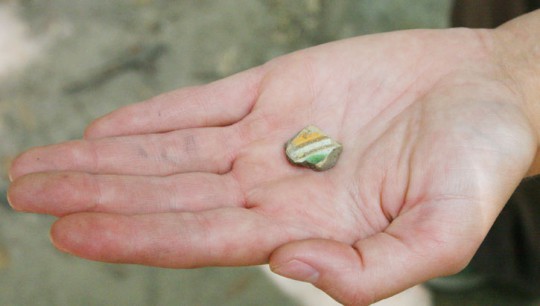
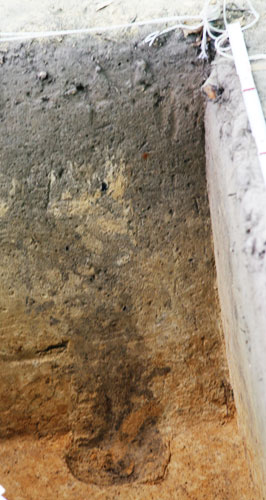
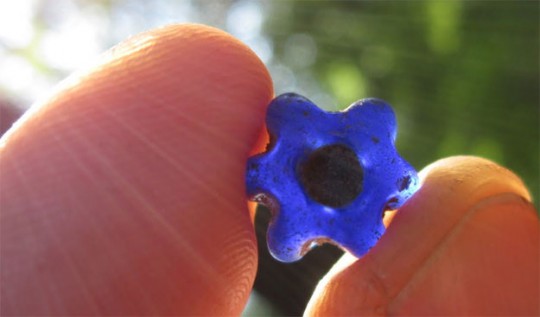
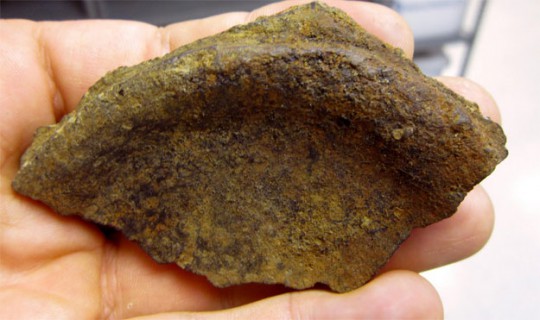
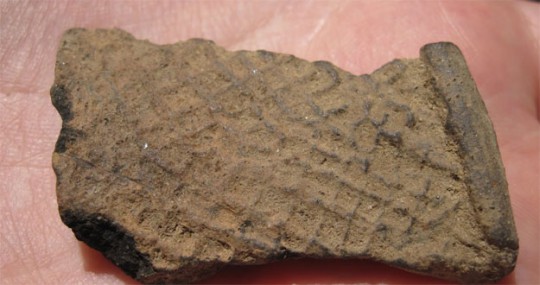
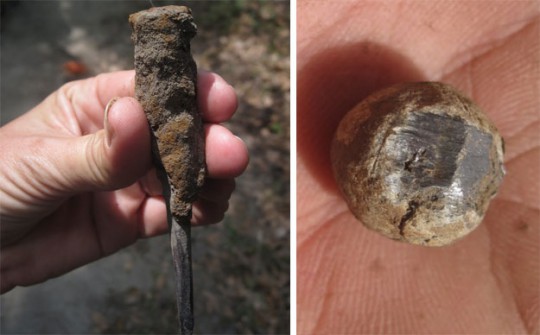
well said, William
“fed up” wrote “There is no such thing as prehistoric pottery.”
Actually, in the world of archeology, there is. Prehistoric is the period prior to written historical records of academic value for a particular area. The date can vary depending on the area. Prehistoric in Egypt is thousands of years BC, while in other societies prehistoric can be prior to 1900 AD or so.
There is no such thing as prehistoric pottery.
I found a arrowhead near chipper road a few month’s ago
I happen to have some pottery ,arrowheads, miniballs, . if one of the archies would like to take a peek..
I like the textured design on that pottery shard, the Creek’s had it going on!, still do, I bet that nasty old musketball was a septic nightmare. I hope to see more.
Well, I know Indians were hunting where we live, my husband found a perfectly preserved Arrowhead after a hard rain one afternoon. It sits on our fireplace, kind of neat to find things like this around here.